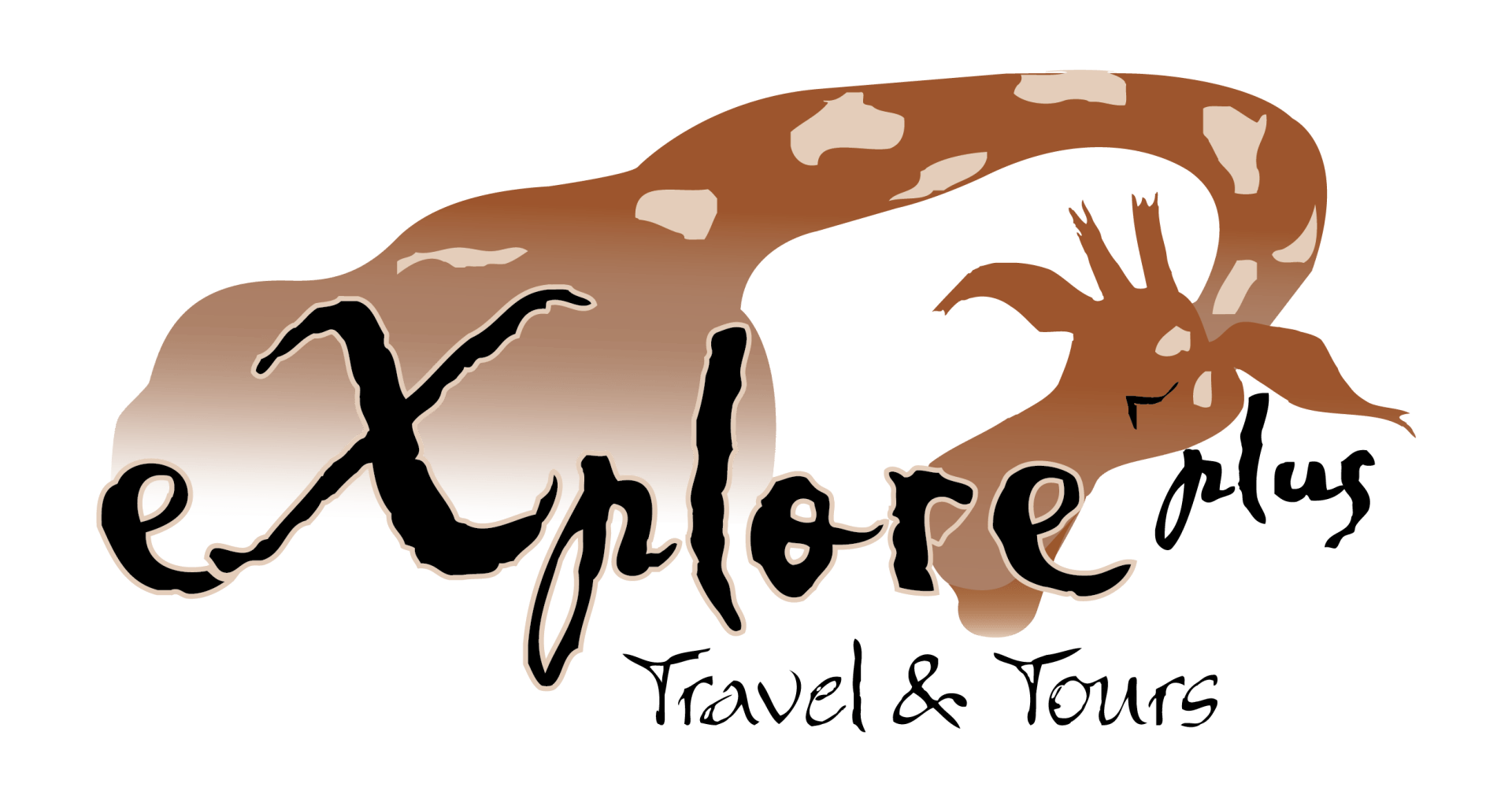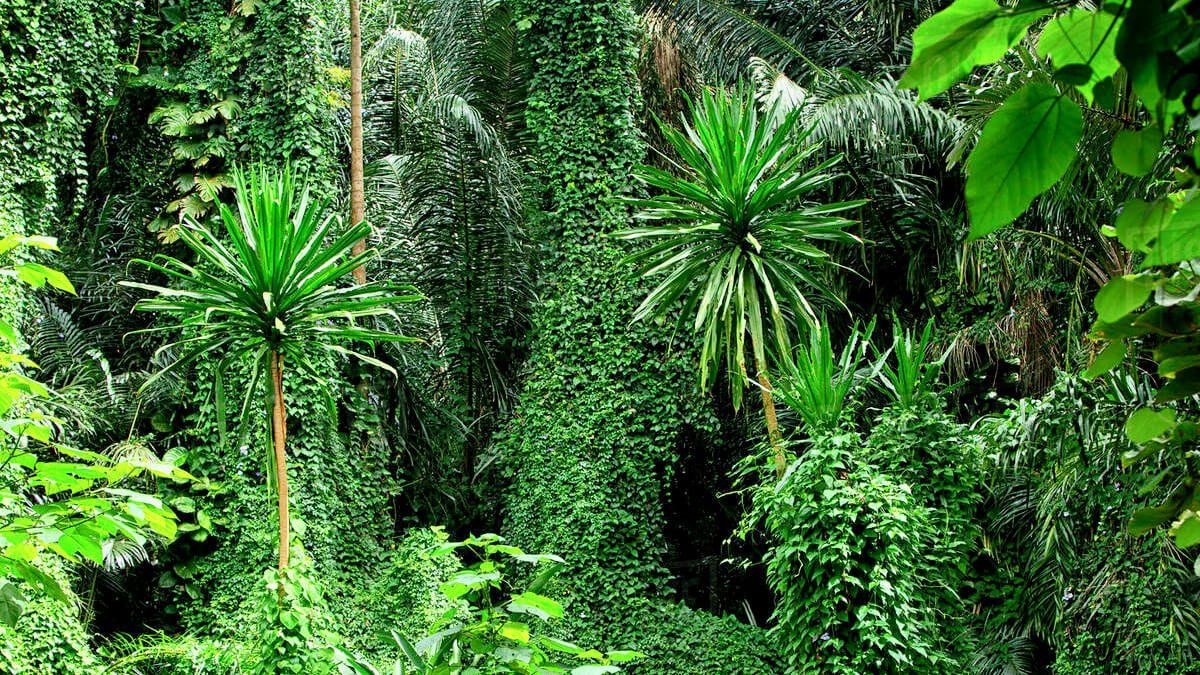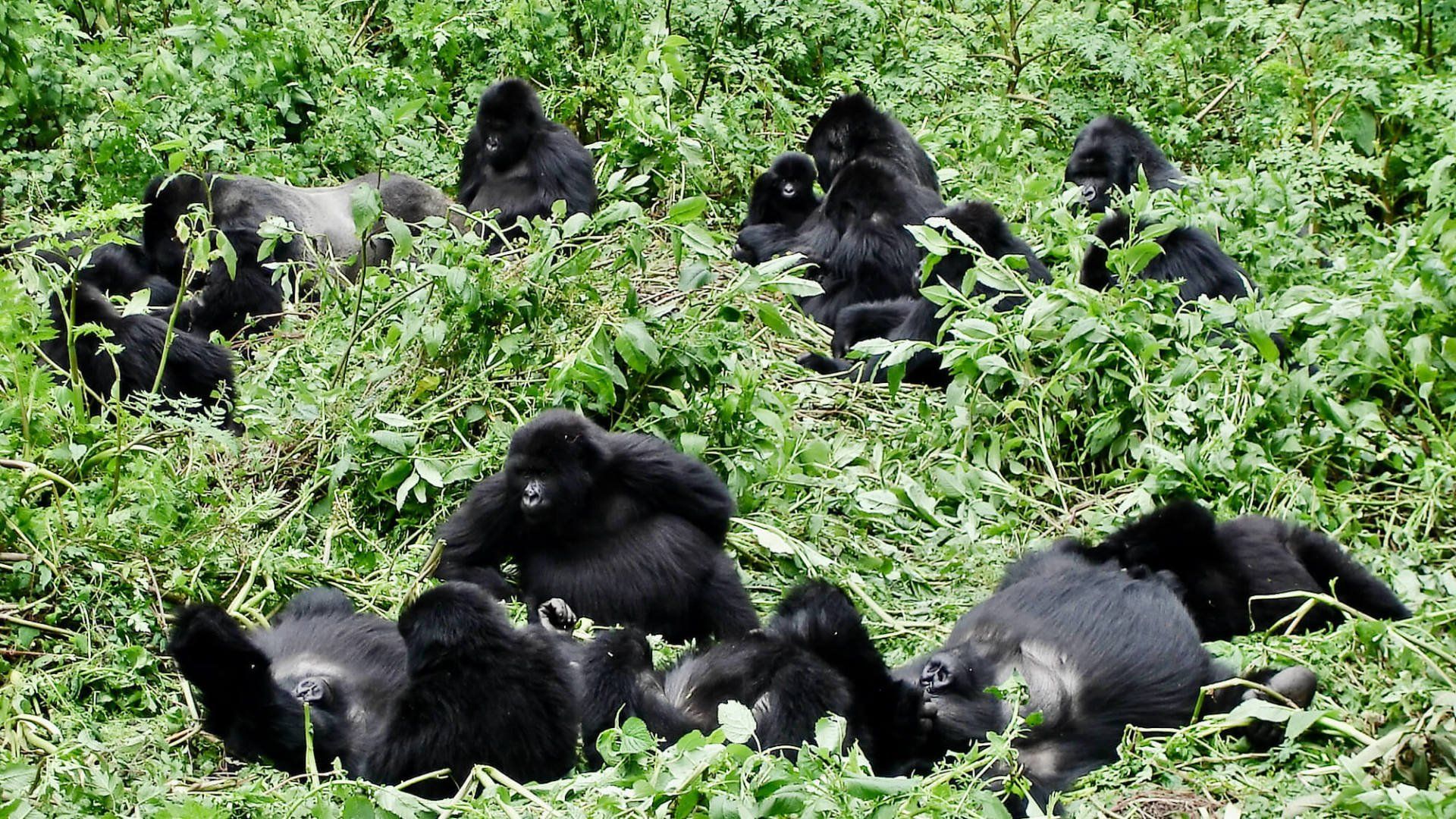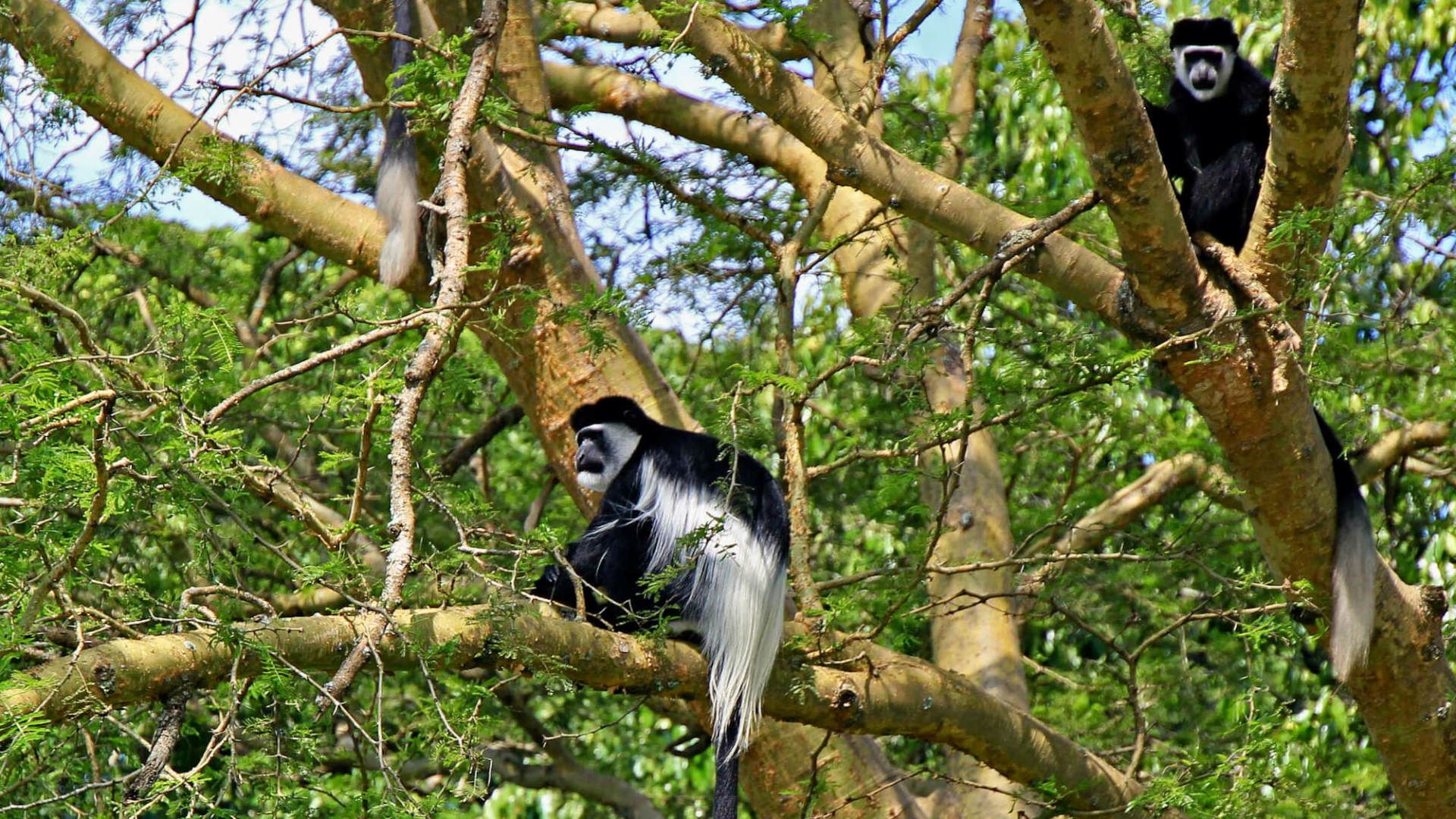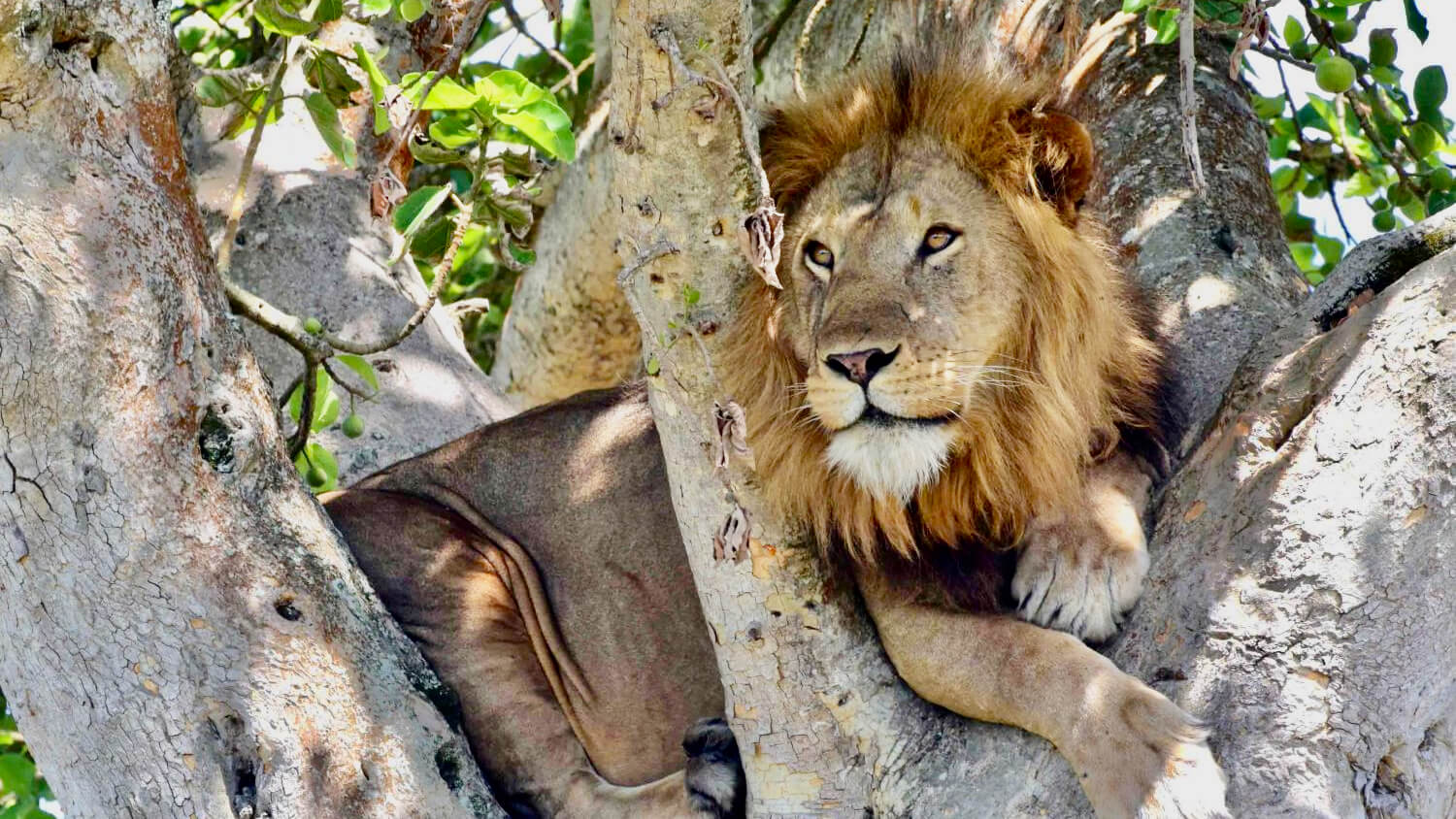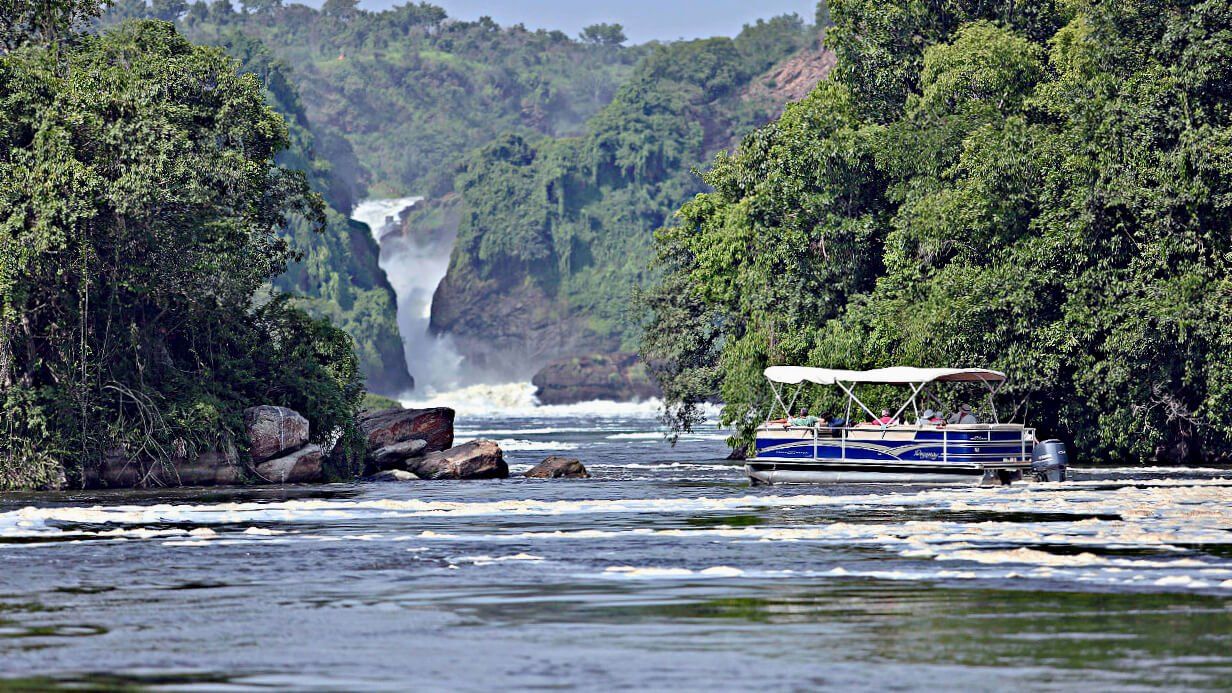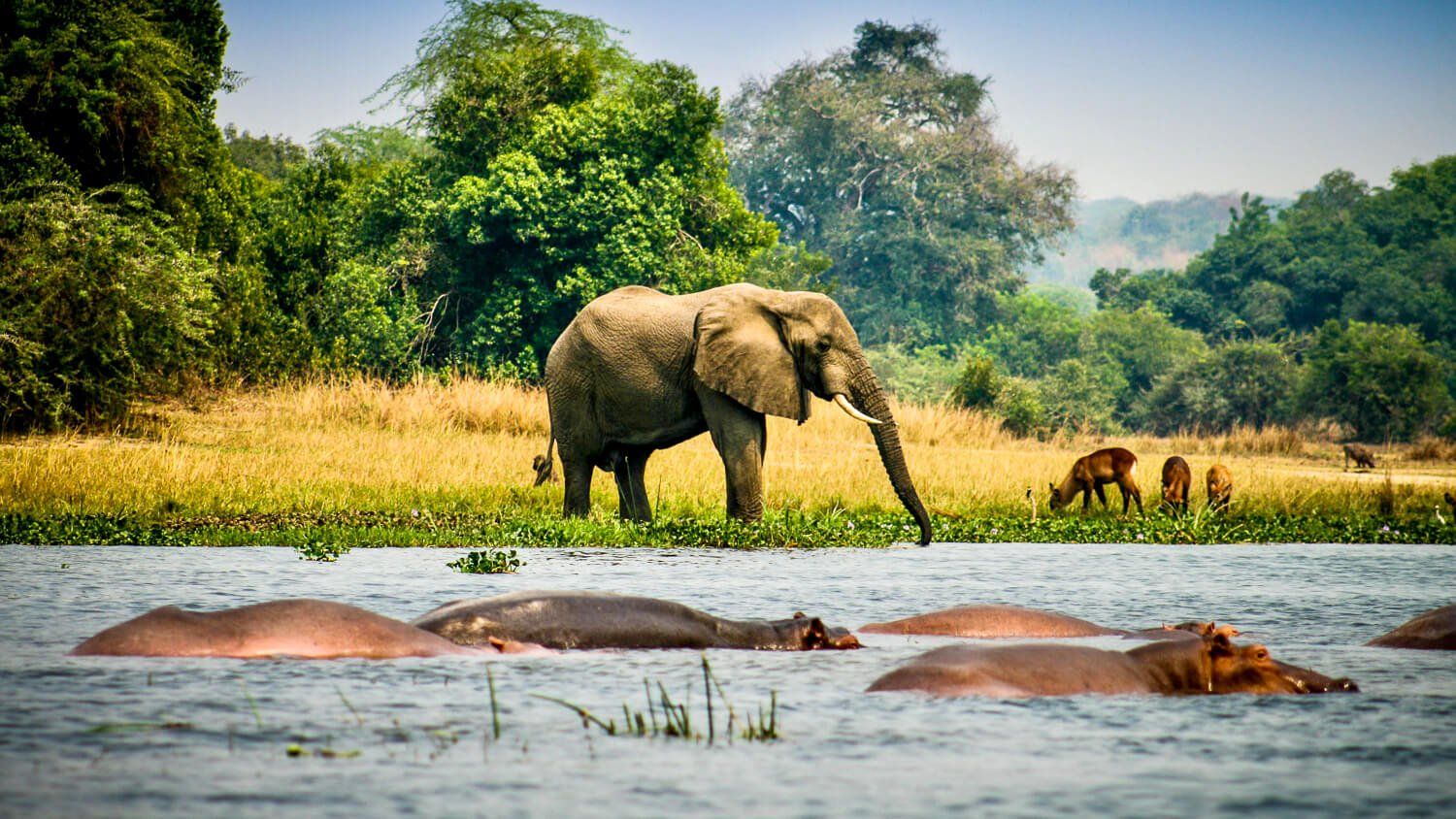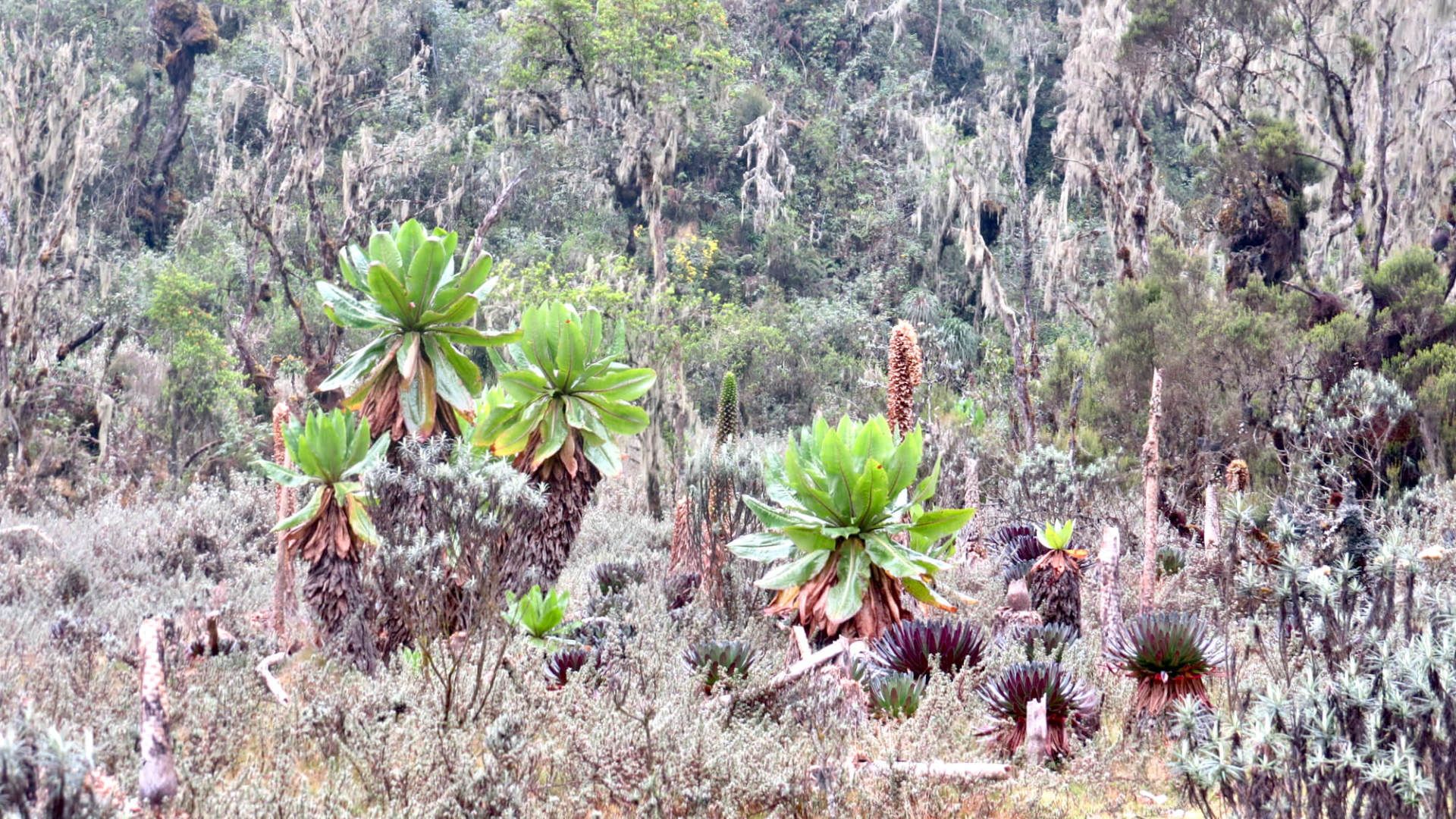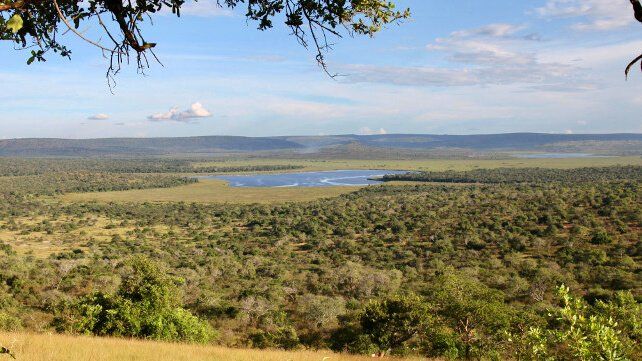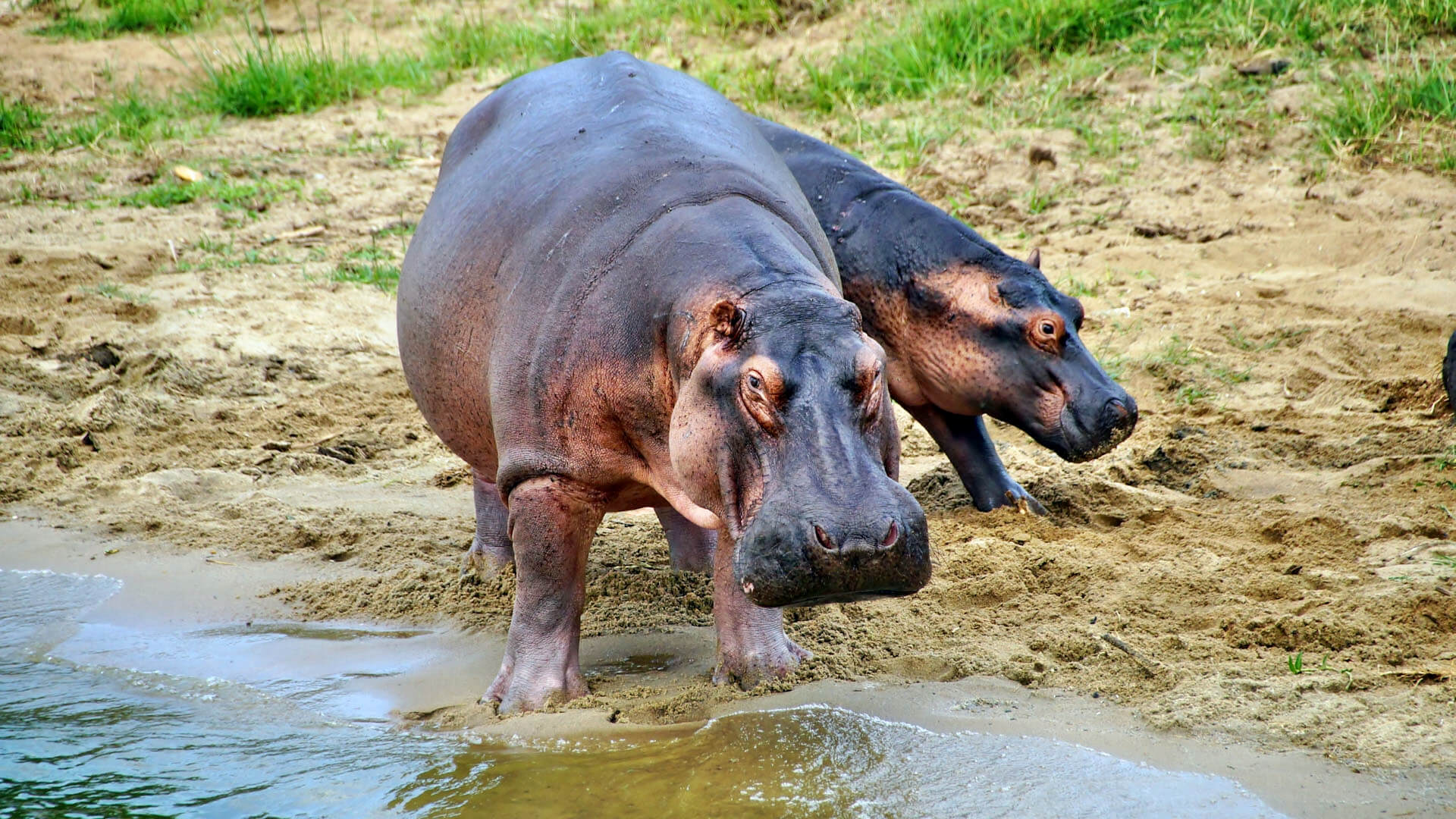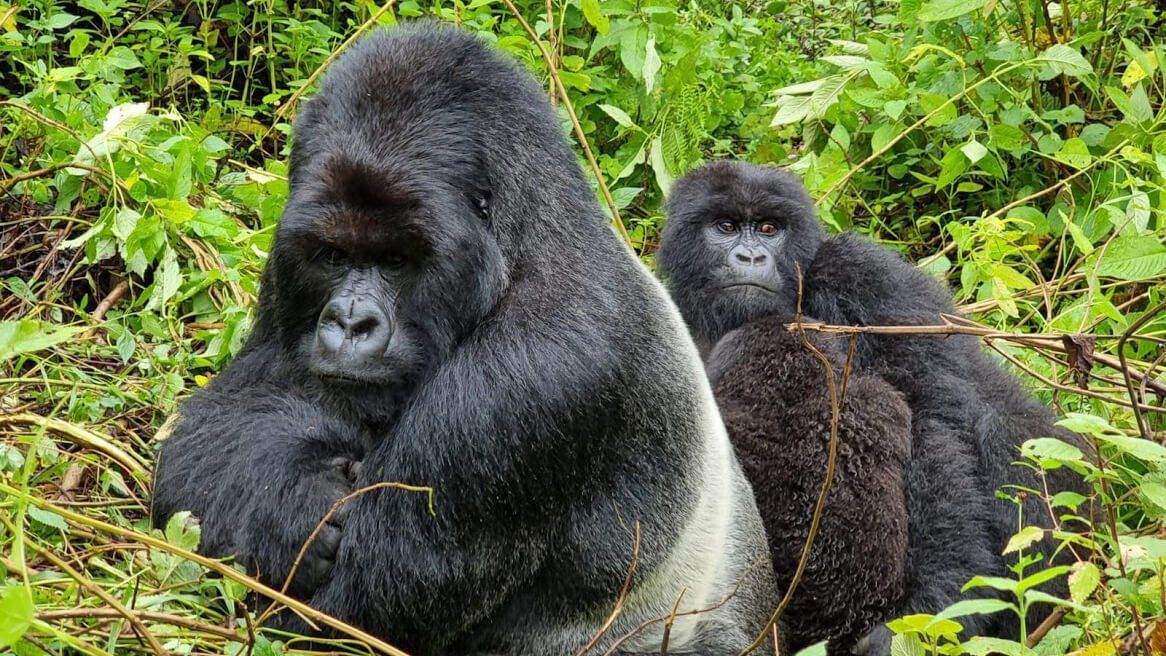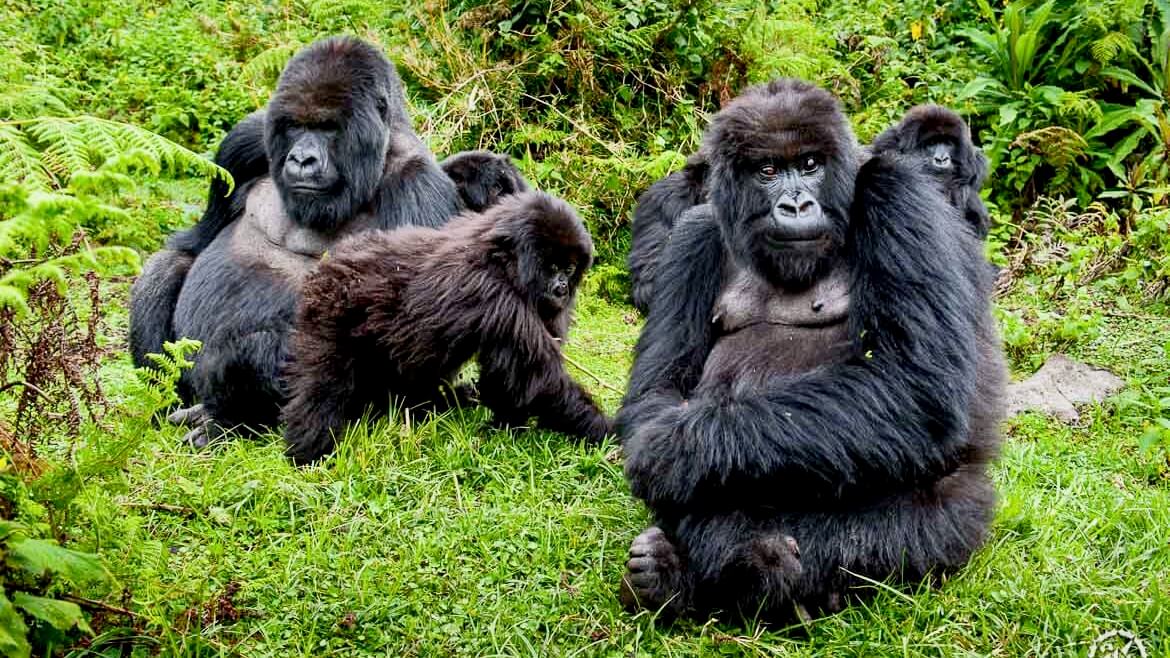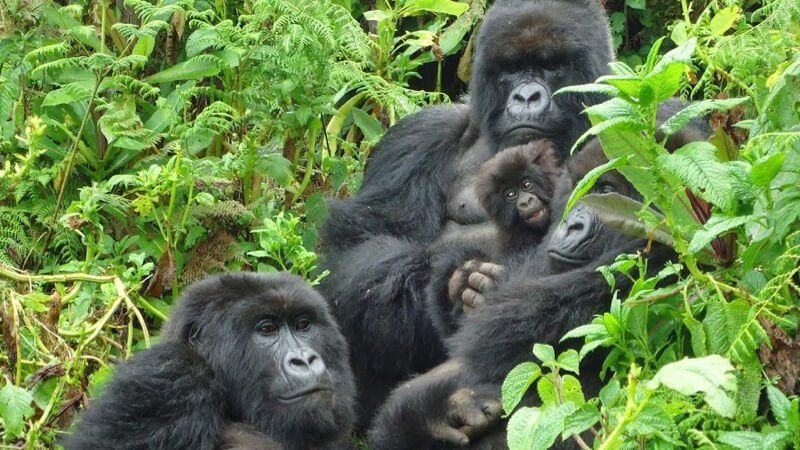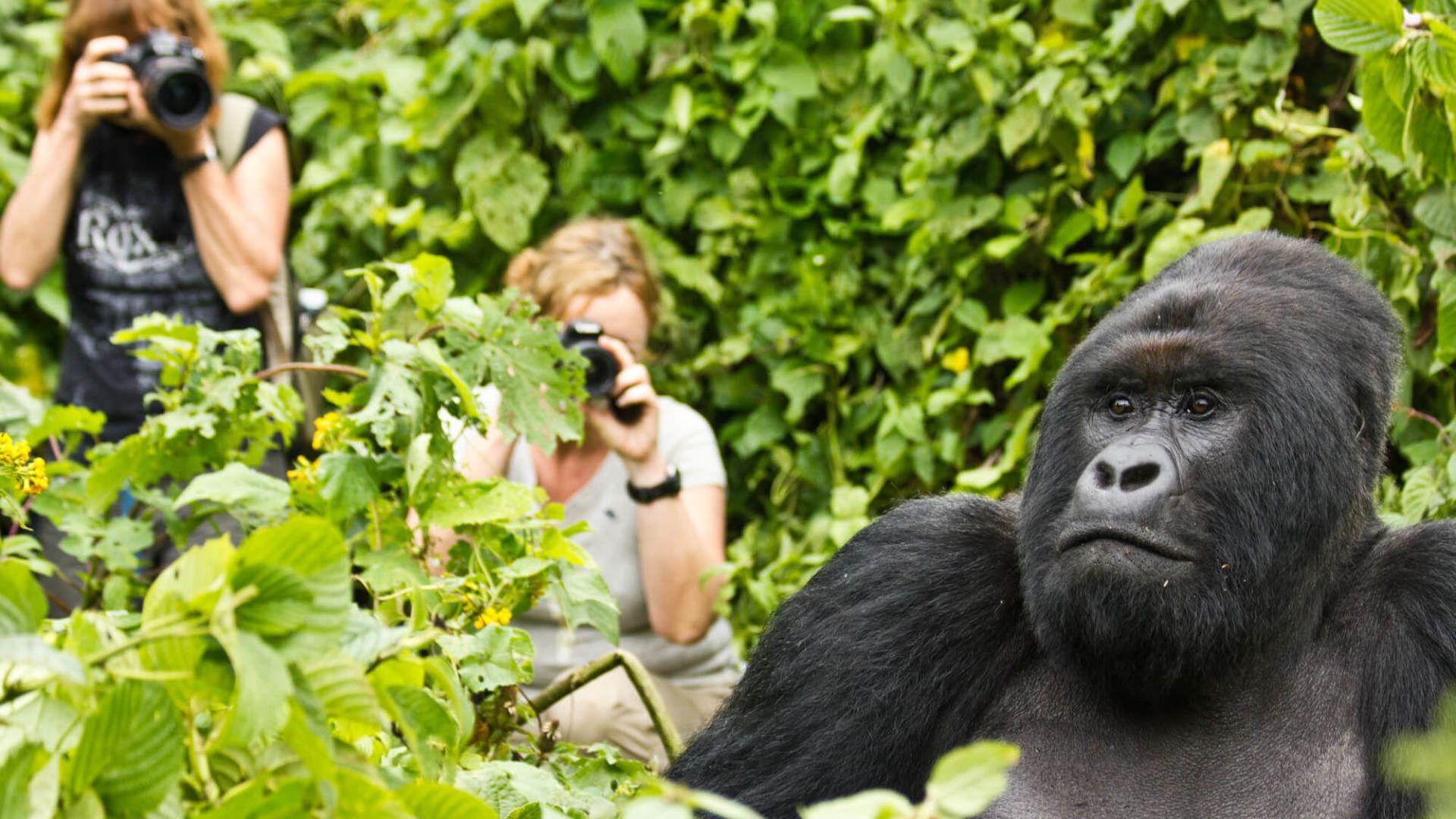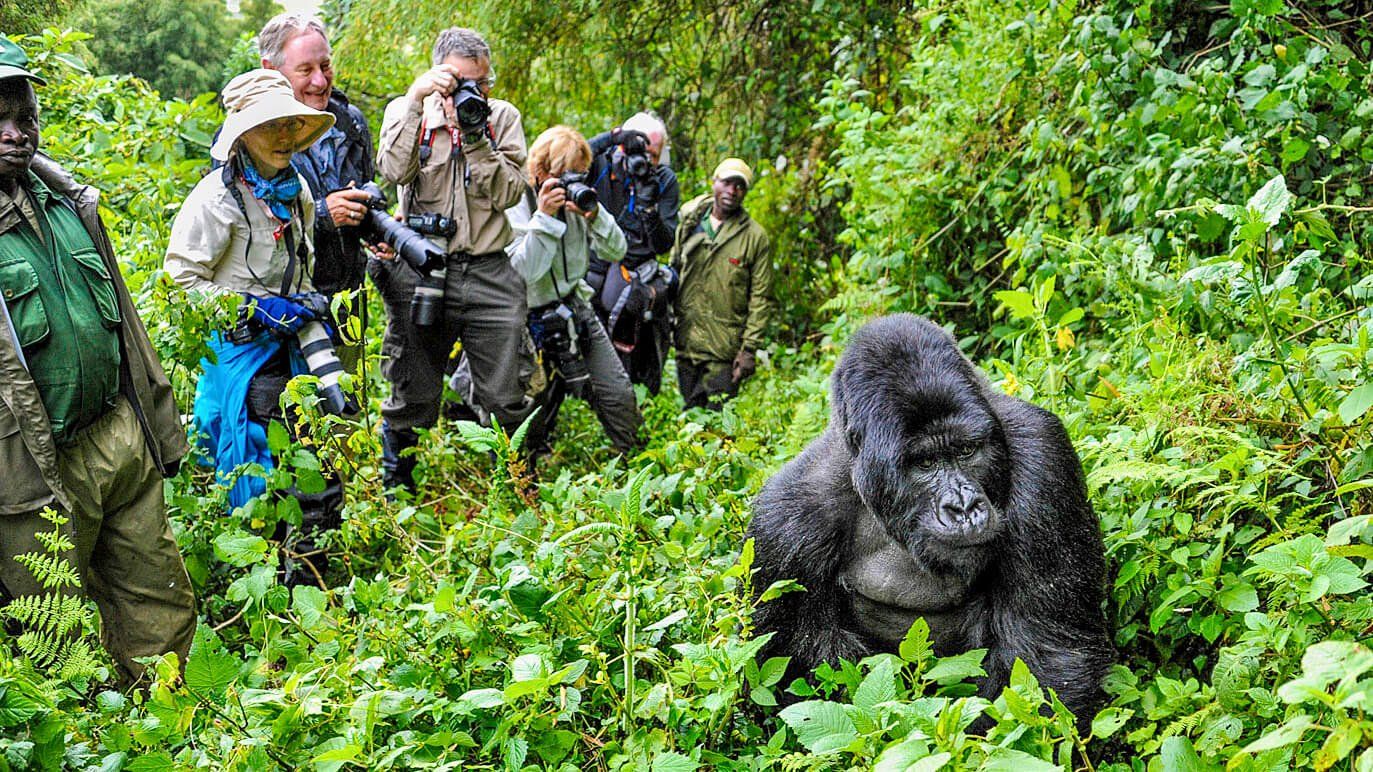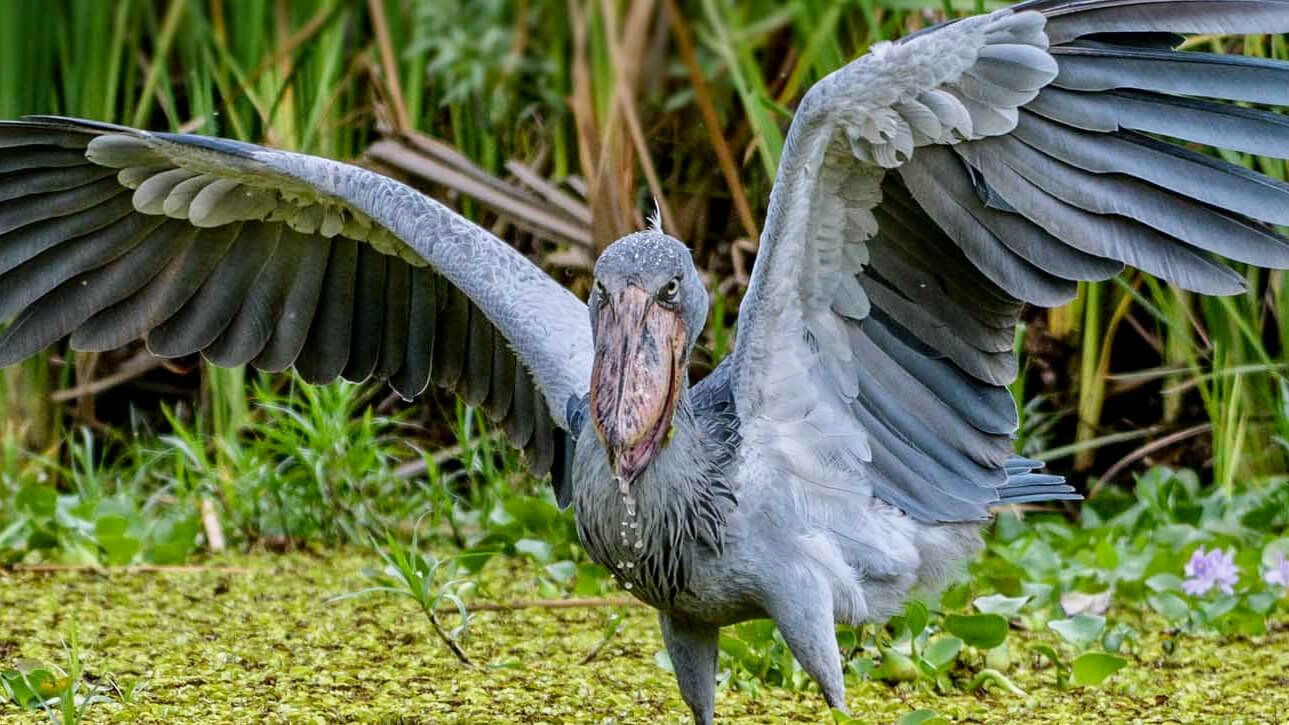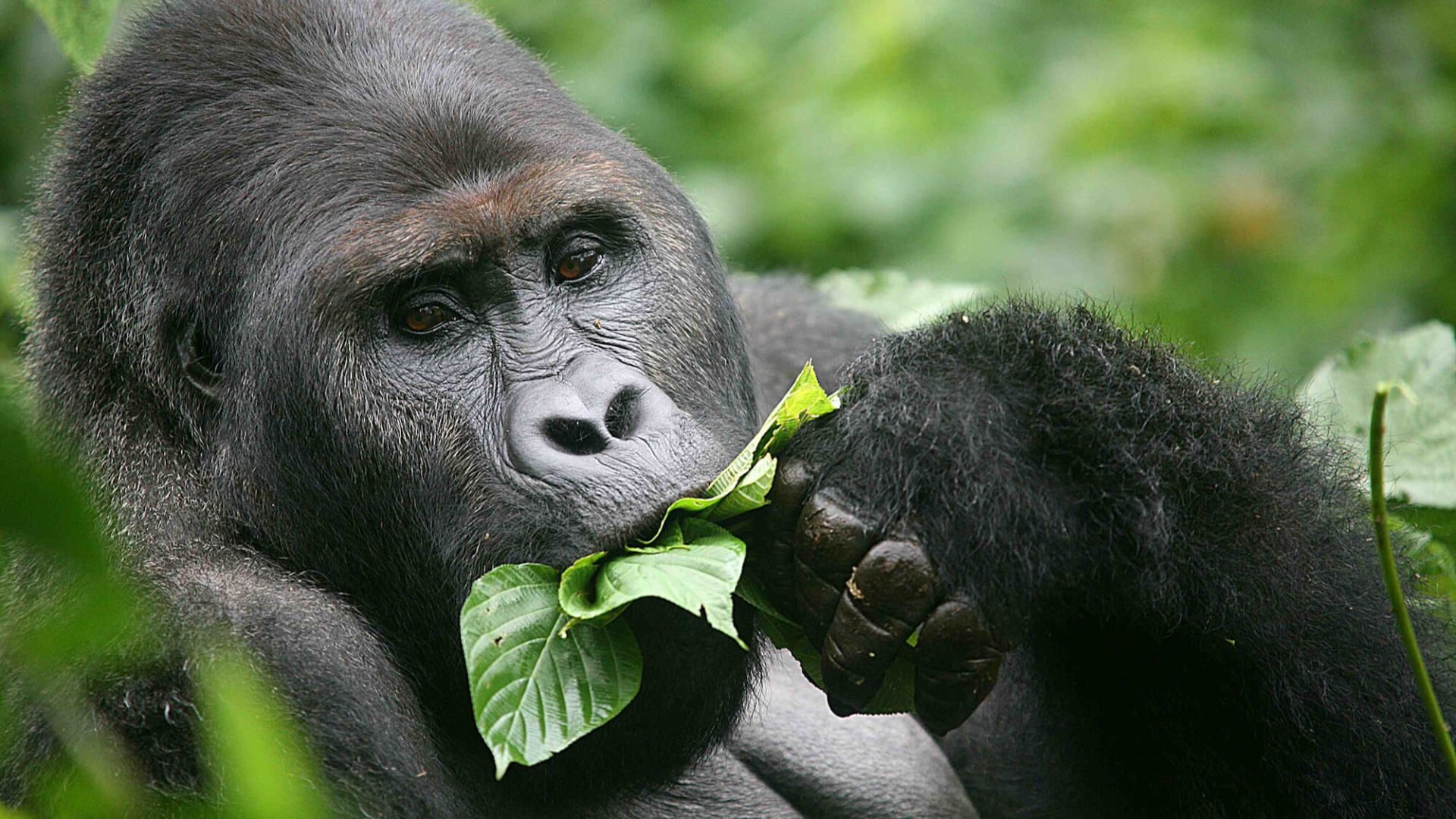Uganda National Parks
- Bwindi Impenetrable National Park
Brief profile:
- Covering 331 km²
- UNESCO world heritage site
- Comprises of jungle forests and contains both montane and lowland forest
- With more than 1,000 flowering plant species including 163 species of trees and 104 species of ferns
Highlights:
- Gorilla trekking
- Nature Hikes
- Bird Walks
- Mountain biking
- Cultural Experiences
- Breathtaking scenery
The Virunga mountain range dominates the National Park and the landscape is dotted with waterfalls and lakes. With a high annual rainfall, the rainforest is deserving of its name as it is truly impenetrable. Bwindi Forest is most famous for being home to half of the world’s population of endangered mountain gorillas. A gorilla encounter is said to be one of the most emotional wildlife adventures you will ever have. The biodiversity in the forest is amazing as it provides a home for over 310 species of butterflies, 200 tree species, 88 moth species, 120 species of mammals including 10 species of primates and 51 reptile species. Apart from the mountain gorilla, other primates include the red-tailed and blue monkeys, L’Hoest’s monkeys, chimpanzees, black and white colobus and baboons. The Bwindi forest has over 350 bird species. Natives living in this area are called the Batwa Pygmies. They are the oldest inhabitants of the great lake region of Central Africa. These hunter-gatherers have a rich culture and history that they are happy to share. A visit to their community is a unique cultural experience unlike any other and will assist in helping to conserve their community and way of life.
There are four areas within the Bwindi Impenetrable forest where you can trek 12 habituated gorilla families (costs US$700 per permit with maximum 8 persons per gorilla family).
Best Time to Visit:
| Jan | Feb | Mar | Apr | May | Jun | Jul | Aug | Sept | Oct | Nov | Dec |
|---|---|---|---|---|---|---|---|---|---|---|---|
| Very Good | Very Good | Good | Poor | Poor | Very Good | Very Good | Very Good | Very Good | Good | Poor | Very Good |
| Jan | Feb | Mar | Apr | May | Jun | Jul | Aug | Sept | Oct | Nov | Dec |
|---|---|---|---|---|---|---|---|---|---|---|---|
| Very Good | Very Good | Good | Poor | Poor | Very Good | Very Good | Very Good | Very Good | Good | Poor | Very Good |
| Jan | Feb | Mar | Apr | May | Jun |
|---|---|---|---|---|---|
| Very Good | Very Good | Good | Poor | Poor | Very Good |
| Jul | Aug | Sept | Oct | Nov | Dec |
|---|---|---|---|---|---|
| Very Good | Very Good | Very Good | Good | Poor | Very Good |
- Kibale Forest National Park
Brief profile:
- Covering 795 km²
- About 325 bird species include six that are endemic to the Albertine Rift region
- 13 species of primates
- Over 800 chimpanzees are protected within the park
Highlights:
- High concentrations of wildlife offering close-range viewing opportunities
- Best place in Africa for chimpanzee tracking
- Nature walk in a tropical rainforest
- Excellent bird watching
- Bigodi Swamps walk - a boardwalk that traverses the papyrus beds
The Kibale National Park lies in western Uganda, southeast of the Fort Portal town. With lush tropical rainforests and a fascinating diversity of animals, Kibale National Park is one of the most beautiful forests in Uganda. Located between the wet rainforests of the Congo basin and the drier East African forest, Kibale supports an unusually rich array of tropical plants and animals from both areas. One of the highest concentrations of monkeys and apes in the world is found here, including the endangered chimpanzee and the red colobus monkey. Kibale's varied altitude supports different types of habitat, ranging from a wet tropical forest on the Fort Portal plateau to woodland and savanna on the rift valley floor. With 351 tree species being recorded in the park, some rise to over 55m and are over 200 years old. The Kibale forest is the best place to spot chimpanzees in Uganda and Rwanda with a 90% chance of seeing them. The park contains the largest population of forest elephants found in Uganda, but they are rarely sighted. Kibale has the highest primate density of any area on earth, including the red-tailed monkey, blue monkey, olive baboon, chimpanzee, colobus (black, white and red) and white-cheeked mangabey. Other mammals found are bushbuck, red and blue duiker, Ugandan kob, scaly-tailed flying squirrel, tree pangolin, buffalo, waterbuck and hippo as well as a large number of birds.
Best Time to Visit:
| Jan | Feb | Mar | Apr | May | Jun | Jul | Aug | Sept | Oct | Nov | Dec |
|---|---|---|---|---|---|---|---|---|---|---|---|
| Very Good | Very Good | Poor | Poor | Poor | Very Good | Very Good | Very Good | Very Good | Poor | Poor | Poor |
| Jan | Feb | Mar | Apr | May | Jun |
|---|---|---|---|---|---|
| Very Good | Very Good | Poor | Poor | Poor | Very Good |
| Jan | Feb | Mar | Apr | May | Jun | Jul | Aug | Sept | Oct | Nov | Dec |
|---|---|---|---|---|---|---|---|---|---|---|---|
| Very Good | Very Good | Poor | Poor | Poor | Very Good | Very Good | Very Good | Very Good | Poor | Poor | Poor |
| Jul | Aug | Sept | Oct | Nov | Dec |
|---|---|---|---|---|---|
| Very Good | Very Good | Very Good | Poor | Poor | Poor |
-
Queen Elizabeth National Park
Brief profile:
- Covering 1,978 km²
- Habitat for over 95 mammal species with about 612 species of birds
- 72 Craters scattered across the equator are evidence of the Albertine Rift’s bubbling volcanic past
Highlights:
- Excellent game viewing including sights of the Uganda kobs, giant forest hogs and sitatunga
- Tree-climbing lions
- Cruise down the Kazinga channel
- Spot the elusive Shoebill plus other native birds on Lake George (with over 600 bird species recorded in the park)
- Chimpanzee tracking at Kyambura Gorge
- Visit the bat cave
Uganda's Queen Elizabeth National Park is undoubtedly one of the most visited parks in Africa. Located in western Uganda, the park boasts one of the highest biodiversity location ratings in the world featuring tropical forests, volcanic craters and grassy plains. Set against the backdrop of the jagged Rwenzori Mountains, the park’s magnificent vistas include dozens of enormous craters carved dramatically into rolling green hills, panoramic views of the Kazinga channel with its banks lined with hippos, buffaloes and elephants and the endless Ishasha plains. The park’s diverse ecosystems make it the ideal habitat for classic big game, 10 primate species (including chimpanzees) and over 600 species of birds. Ishasha in the southern part of the park, is home to the famous tree-climbing lions. You can be sure to spot many buffaloes, giant forest hogs, warthogs, rare aquatic sitatunga antelope, horned Ugandan kob, waterbucks, leopards, topi and elephants. A relaxing boat ride on the channel is a popular attraction and a great way to see the hippos! The sunset over the water is spectacular.
Best Time to Visit:
| Jan | Feb | Mar | Apr | May | Jun |
|---|---|---|---|---|---|
| Very Good | Very Good | Good | Good | Good | Very Good |
| Jul | Aug | Sept | Oct | Nov | Dec |
|---|---|---|---|---|---|
| Very Good | Very Good | Very Good | Good | Good | Good |
| Jan | Feb | Mar | Apr | May | Jun | Jul | Aug | Sept | Oct | Nov | Dec |
|---|---|---|---|---|---|---|---|---|---|---|---|
| Very Good | Very Good | Good | Good | Good | Very Good | Very Good | Very Good | Very Good | Good | Good | Good |
| Jan | Feb | Mar | Apr | May | Jun | Jul | Aug | Sept | Oct | Nov | Dec |
|---|---|---|---|---|---|---|---|---|---|---|---|
| Very Good | Very Good | Good | Good | Good | Very Good | Very Good | Very Good | Very Good | Good | Good | Good |
- Murchinson Falls National Park
Brief profile:
- Covering 3,840 km²
- Largest national park in Uganda
- 451 Bird species recorded
Highlights:
- The Victoria Nile, which plunges 45m over the remnant rift valley wall, creating the dramatic Murchison Falls
- Boat ride along the Nile to the foot of Murchison Falls
- Guided nature walks along the banks of the river
- One of the few places to find Shoebill storks
- Nile perch and tiger fish provide an exciting challenge to anglers
- Chimpanzee tracking at Kaniyo Pabidi Forest
Uganda’s largest national park, Murchison Falls National Park, is located in north-western Uganda. The park combined with the Bugungu Wildlife Reserve and the Karuma Wildlife Reserve forms the Murchison Falls Conservation Area. Murchison Falls National Park derives its name from the Murchison Falls where the mighty Nile river explodes through a narrow gorge and flows down to become a placid river whose banks are thronged with hippos, crocodiles, waterbuck and buffaloes. The vegetation is characterised by savannah, riverine forest and woodland. Wildlife includes lion, leopard, elephant, giraffe, buffalo, hartebeest, oribi, Ugandan kob, chimpanzees and many bird species including the rare shoebill. The best time for bird watching is January to March when there is fewer tourists and heightened bird activity.
Best Time to Visit:
| Jan | Feb | Mar | Apr | May | Jun |
|---|---|---|---|---|---|
| Very Good | Very Good | Good | Good | Very Good | Very Good |
| Jul | Aug | Sept | Oct | Nov | Dec |
|---|---|---|---|---|---|
| Very Good | Very Good | Very Good | Good | Fair | Very Good |
| Jan | Feb | Mar | Apr | May | Jun | Jul | Aug | Sept | Oct | Nov | Dec |
|---|---|---|---|---|---|---|---|---|---|---|---|
| Very Good | Very Good | Good | Good | Good | Very Good | Very Good | Very Good | Very Good | Good | Fair | Very Good |
| Jan | Feb | Mar | Apr | May | Jun | Jul | Aug | Sept | Oct | Nov | Dec |
|---|---|---|---|---|---|---|---|---|---|---|---|
| Very Good | Very Good | Good | Good | Good | Very Good | Very Good | Very Good | Very Good | Good | Fair | Very Good |
- Rwenzori Mountains National Park
Brief profile:
- UNESCO world heritage site
- At 5,109m, the Rwenzori is the third highest mountain in Africa and the highest mountain range in Africa
- Five different vegetation zone
- Over twenty-five peaks above 4,500m
Highlights:
- Climbing
- Pristine tropical rainforest
- Trekking through Giant Lobelia forests
- Snow-capped peaks at the Equator
- Remote alpine valleys and glacial landscapes
The Rwenzori Mountains National Park is located in southwestern Uganda. The park covers more than half of the Rwenzori Mountain Range, which is commonly known as the “Mountains of the Moon”. The rugged landscape of these magnificent hills is often covered by snow, making them highly visible from far away. The mountain chain is comprised of three mountains: Albert, Alexandra and Africa's third highest peak, Margherita (5109m). The Rwenzori Mountains are an extremely steep and rugged mountain range with over 25 peaks above 4500m high. The region's glaciers, waterfalls and lakes make it one of Africa's most beautiful alpine areas. The park is habitat to a few endangered species and has a rich, unusual flora that include giant heathers, groundsels and lobelias now known as “Africa's botanic big game”. The vegetation changes as one enters the five different vegetation zones found in the mountains, namely: grasslands, montane forest, bamboo or mimulopsis zone, heather or Rapanea zone and lastly the afro-alpine moorland zone. The mountain range is home to roughly 220 different bird species and 70 species of mammals such as forest elephants, L’Hoest’s monkeys, eastern chimpanzees and black-fronted or red duikers. Other animals that call this beautiful region home are leopards, bushbucks, giant forest hogs and buffaloes. This picturesque mountain range offers varied levels of hiking difficulty and would please all avid hikers and mountaineers.
Best Time to Visit:
| Jan | Feb | Mar | Apr | May | Jun |
|---|---|---|---|---|---|
| Good | Very Good | Very Good | Poor | Poor | Very Good |
| Jul | Aug | Sept | Oct | Nov | Dec |
|---|---|---|---|---|---|
| Very Good | Very Good | Very Good | Good | Poor | Good |
| Jan | Feb | Mar | Apr | May | Jun | Jul | Aug | Sept | Oct | Nov | Dec |
|---|---|---|---|---|---|---|---|---|---|---|---|
| Good | Very Good | Very Good | Poor | Poor | Very Good | Very Good | Very Good | Very Good | Good | Poor | Good |
| Jan | Feb | Mar | Apr | May | Jun | Jul | Aug | Sept | Oct | Nov | Dec |
|---|---|---|---|---|---|---|---|---|---|---|---|
| Good | Very Good | Very Good | Poor | Poor | Very Good | Very Good | Very Good | Very Good | Good | Poor | Good |
- Semliki National Park
Brief profile
- Covering 220 km²
- Home to eight species of primate, more than 400 birds and 300 butterfly species
- Swamps, montane and lowland vegetation
Highlights:
- Birding paradise - 441 bird species including 46 Guinea-Congo Biome species found nowhere else in East Africa, and 5 species endemic to the Albertine Rift Valley only
- Sempaya Hot springs - the largest geyser spouts up to 2m high from a low salt sculpture opening
- Day hikes - Kirimia River Trail - 15km
- Cultural encounters with the Batwa people
Semliki National Park is one of Africa’s most ancient and biodiverse forests. Geological processes show the age of the forest with hot springs bubbling up from the depths, demonstrating the powerful subterranean forces that shaped the rift valley millions of years ago. The park is located in the Semliki Valley on the remote, western side of the Rwenzori Mountains in western Uganda. The eastern most extension of the great Ituri Forest of the Congo River basin in DR Congo forms part of this national park. The Semliki river is a miniature version of the Congo river, and the forest is also home to the many central African wildlife species. The fauna includes over 400 bird species of which 216 are true forest birds like the Sassi’s olive greenbul and the ground thrush. The park is also home to over 53 mammals, including 11 endemic species like pygmy antelopes, two flying squirrel species, hippos, leopards, buffaloes, elephants and the unique water chevrotain (mouse-deer) also known as “fanged deer”.
Best Time to Visit:
| Jan | Feb | Mar | Apr | May | Jun |
|---|---|---|---|---|---|
| Good | Very Good | Very Good | Poor | Poor | Very Good |
| Jul | Aug | Sept | Oct | Nov | Dec |
|---|---|---|---|---|---|
| Very Good | Very Good | Very Good | Good | Poor | Good |
| Jan | Feb | Mar | Apr | May | Jun | Jul | Aug | Sept | Oct | Nov | Dec |
|---|---|---|---|---|---|---|---|---|---|---|---|
| Good | Very Good | Very Good | Poor | Poor | Very Good | Very Good | Very Good | Very Good | Good | Poor | Good |
| Jan | Feb | Mar | Apr | May | Jun | Jul | Aug | Sept | Oct | Nov | Dec |
|---|---|---|---|---|---|---|---|---|---|---|---|
| Good | Very Good | Very Good | Poor | Poor | Very Good | Very Good | Very Good | Very Good | Good | Poor | Good |
- Lake Mburo National Park
Brief profile:
- Covering 260 km²
- Wetland habitats comprise 20% of the park's surface
- 350 bird species
- 5 of the 13 lakes in the area are within the park boundaries
Highlights:
- Nature Hikes
- Quad biking
- Game drives
- Forest walks
Lake Mburo National Park is a compact gem, located conveniently close to the highway that connects Kampala to the parks of western Uganda. It is the smallest of Uganda’s savannah national parks with underlying ancient Precambrian metamorphic rocks. Among the 350 bird species found here, you should see malachite kingfishers, pied kingfishers, African fish eagles, Rufous long-tailed starlings, blue-headed weavers, green-necked doves, hammerkops, pelicans, herons, cormorants and even the rare shoebills. Other animals roaming this beautiful park are zebras, impalas, eland, buffaloes, oribis, defassa waterbucks, leopards, hippos, hyenas, topi and reedbucks. Together with 13 other lakes in the area, Lake Mburo forms part of a 50km long wetland system linked by a swamp. Five of these lakes lie within the park’s borders. In the western part of the park, the savanna is interspersed with rocky ridges and forested gorges while patches of papyrus swamp and narrow bands of lush riparian woodland line many lakes.
Best Time to Visit:
| Jan | Feb | Mar | Apr | May | Jun |
|---|---|---|---|---|---|
| Very Good | Very Good | Good | Good | Good | Very Good |
| Jul | Aug | Sept | Oct | Nov | Dec |
|---|---|---|---|---|---|
| Very Good | Very Good | Very Good | Good | Good | Good |
| Jan | Feb | Mar | Apr | May | Jun | Jul | Aug | Sept | Oct | Nov | Dec |
|---|---|---|---|---|---|---|---|---|---|---|---|
| Very Good | Very Good | Good | Good | Good | Very Good | Very Good | Very Good | Very Good | Good | Good | Good |
| Jan | Feb | Mar | Apr | May | Jun | Jul | Aug | Sept | Oct | Nov | Dec |
|---|---|---|---|---|---|---|---|---|---|---|---|
| Very Good | Very Good | Good | Good | Good | Very Good | Very Good | Very Good | Very Good | Good | Good | Good |
- Mabamba Bay Wetland System (Swamps)
Brief profile
- About 60-minutes from Entebbe
- Characterised by small channels and lagoons
- Ramsar wetland site since 2006
Highlights:
- Bird-lovers dream destination - home to 260 bird species, including the massive shoebill
This papyrus swamp is characterised by small channels of marsh-filled water and lagoons and is located close to Kampala and Entebbe. Lying on the edge of Lake Victoria, Mabamba Bay is a massive 16 500 hectares big and is part of the list of wetlands of international importance as chosen by the Ramsar Convention. The site supports an average of close to 190 000 birds and is part of the wetland system which hosts approximately 38% of the global population of the blue swallow, as well as the globally-threatened papyrus yellow warbler and other birds of global conservation concern. This wetland system supports productive fishery activities that provide fish for home consumption and commercial use. The area is also a source of raw material for local crafts, building materials, water for domestic and livestock use and non-wood products.
Best Time to Visit:
| Jan | Feb | Mar | Apr | May | Jun |
|---|---|---|---|---|---|
| Good | Very Good | Very Good | Poor | Poor | Very Good |
| Jul | Aug | Sept | Oct | Nov | Dec |
|---|---|---|---|---|---|
| Very Good | Very Good | Very Good | Good | Poor | Good |
| Jan | Feb | Mar | Apr | May | Jun | Jul | Aug | Sept | Oct | Nov | Dec |
|---|---|---|---|---|---|---|---|---|---|---|---|
| Good | Very Good | Very Good | Poor | Poor | Very Good | Very Good | Very Good | Very Good | Good | Poor | Good |
| Jan | Feb | Mar | Apr | May | Jun | Jul | Aug | Sept | Oct | Nov | Dec |
|---|---|---|---|---|---|---|---|---|---|---|---|
| Good | Very Good | Very Good | Poor | Poor | Very Good | Very Good | Very Good | Very Good | Good | Poor | Good |
SPECIAL - RWANDA GORILLA TREKKING
GROUP SAFARI
DISCOUNTED GORILLA
PERMIT RATE!
4 days / 3 nights
Highlights: Gorilla Trekking in Volcanoes National Park
Departure dates: 28 May / 26 Nov & 10 Dec '25
UGANDA GORILLA TREKKING
GROUP SAFARI
4 days / 3 nights
Highlights: Gorilla Trekking in Bwindi NP
Date: 20 - 23 Jul / 06 - 09 Sep '25
RWANDA & UGANDA GORILLA TREKKING
GROUP SAFARI
4 days / 3 nights
Hightlighs: Kigali & Gorilla Trekking in Bwindi NP
Date: Jun & Sept 2025
RWANDA GORILLA & CHIMPANZEE SAFARI
7 days / 6 nights
Highlights: Gorilla & Chimpanzee Trekking
Date: Private Safari
UGANDA GORILLA & CHIMPANZEE SAFARI
GROUP SAFARI
9 Days / 8 Nights
Highlights: Gorilla & Chimpanzee Trekking
Date: 20 - 29 Sep 2025
BEST OF UGANDA
10 Days / 9 Nights
Highlights: Murchison Falls / Chimp and Gorilla Trekking
Date: Private Safari
BIRDING, CHIMPANZEE & GORILLA SAFARI
10 Days / 9 Night
Highlights: Mabamba Swamp / Semliki / Kibale NP / Bwindi NP
Date: Private Safari
MOUNTAIN & LOWLAND GORILLA SAFARI
8 Days / 7 Nights
Highlights: Mountain Gorilla, Chimpanzee & Eastern Lowland Gorilla Trekking
Date: Private Safari
What Our Clients Say About Our Safaris & Tours
SIGN UP FOR OUR NEWSLETTER
Africa is calling – Sign up to our newsletter today!Get exclusive access to the latest on exclusive offers, getaways and travel inspiration.
Contact Us
We will get back to you as soon as possible
Please try again later
Copyright © 2024 Digital Zoo Website Design Company - All Rights Reserved
Domain Registration
|
Email Address
|
Website Design
|
Graphic Design
|
Social Media Management
|
Search Engine Optimization
|
Online Marketing
|
Web App Developer
All Rights Reserved | Explore Plus Travel & Tours
All Rights Reserved | Explore Plus Travel & Tours
